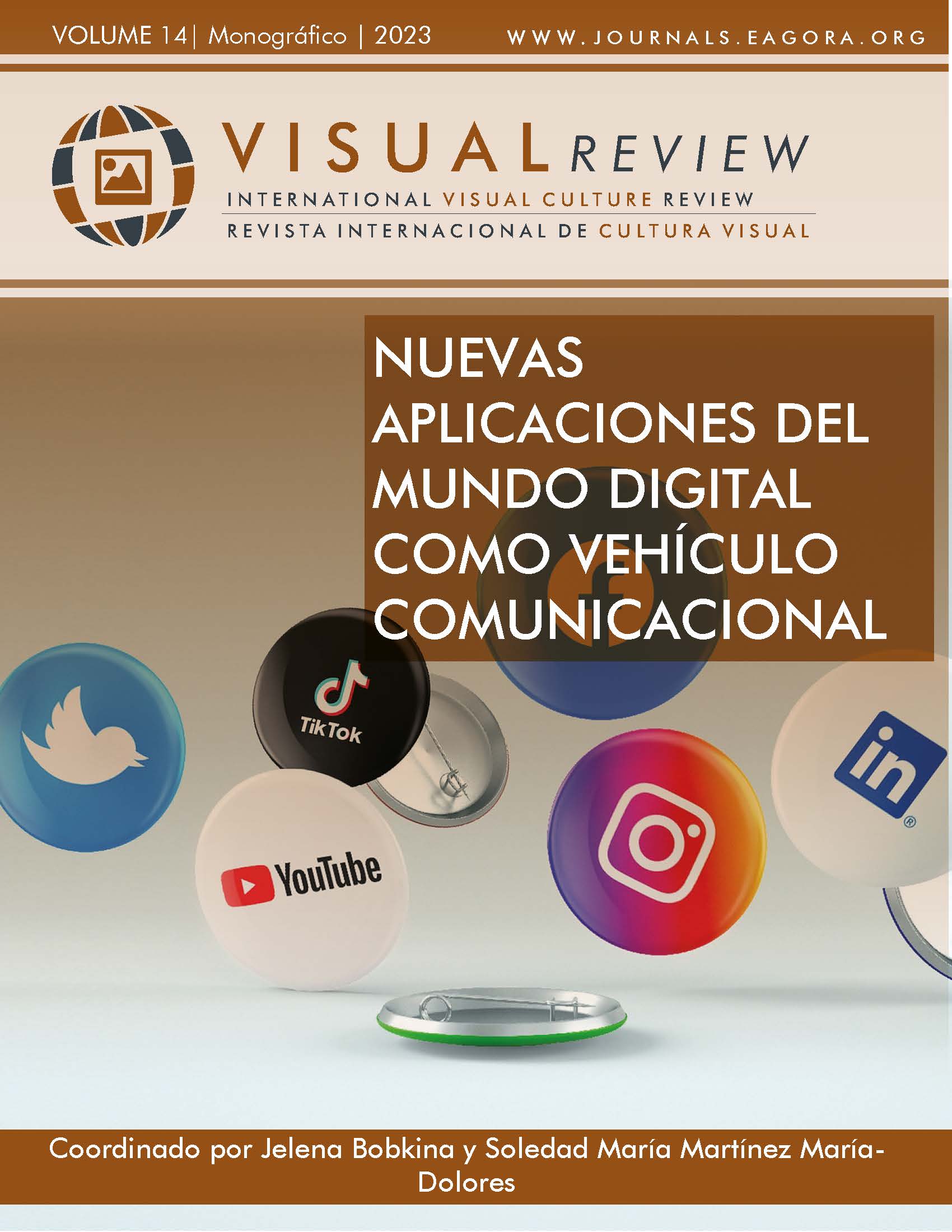Algorithmgraphy as a milestone and phenomenon in the production of still images in the digital era
Resignification of the notion of the photographic image and projection of the medium in a context of image production with artificial intelligence and machine learning
DOI:
https://doi.org/10.37467/revvisual.v10.4607Keywords:
Post-photography, Big data, Deep learning, Communication, Algorithm, Photography, Artificial intelligenceAbstract
Still images and their production models have evolved significantly in recent years. With today's technology, images can be produced by artificial intelligences (AIs) and with techniques such as algorithm creation and machine learning. This article attempts to investigate the understanding of this phenomenon, analysing the role of the image today and its methods of capture and representation for different purposes (graphics) and trying to contribute to establish a model that would lead us to the concept of algorithmography as a milestone in the production of images.
Downloads
Global Statistics ℹ️
|
1790
Views
|
1018
Downloads
|
|
2808
Total
|
|
References
Barthes, R. (1965). Elements de sémiologie.
Borgo, M., Licata, M., & Iorio, S. (2016). Post-mortem Photography: the Edge Where Life Meets Death?. Human and Social Studies, 5(2), 103-115. https://n9.cl/mew8a DOI: https://doi.org/10.1515/hssr-2016-0016
Chella, A., Frixione, M., & Gaglio, S. (1997). A cognitive architecture for artificial vision. Artificial Intelligence, 89(1-2), 73-111. www.sciencedirect.com/science/article/pii/S0004370296000392 DOI: https://doi.org/10.1016/S0004-3702(96)00039-2
Dot CSV (2022). ¿Tiene la IA de Google CONSCIENCIA? NO, pero me preocupa... (LaMDA). Youtube. Universidad Politécnica de Valencia. www.youtube.com/watch?v=Ko7WFx4rUw0
Dyck, P. K. (1968). Do Androids Dream of Electric Sheep? Print (hardback & paperback)
Fontcuberta, J. (2016a). La furia de las imágenes: notas sobre la posfotografía.
Fontcuberta, J. (2016b). La posfotografía explicada a los monos. Porto Arte: Revista de Artes Visuais, 21(35). www.seer.ufrgs.br/PortoArte/article/view/73723 DOI: https://doi.org/10.22456/2179-8001.73723
Gabel, V. P. (2017). Artificial vision. Springer. https://link.springer.com/book/10.1007/978-3-319-41876-6?noAccess=true DOI: https://doi.org/10.1007/978-3-319-41876-6
Hafsteinsson, S. B. (1999). Post-mortem and funeral photography in Iceland. History of photography, 23(1), 49-54. www.tandfonline.com/doi/abs/10.1080/03087298.1999.10443798 DOI: https://doi.org/10.1080/03087298.1999.10443798
Humayun, M. S., & de Juan, E. (1998). Artificial vision. Eye, 12(3), 605-607. www.nature.com/articles/eye1998151 DOI: https://doi.org/10.1038/eye.1998.151
Linkman, A. (2006). Taken from life: Post-mortem portraiture in Britain 1860–1910. History of photography, 30(4), 309-347. www.tandfonline.com/doi/abs/10.1080/03087298.2006.10443484 DOI: https://doi.org/10.1080/03087298.2006.10443484
Morla, J. (2022). LaMDA, Google y cuando jugar con una inteligencia artificial es posible. El País. 2022-06-24. https://n9.cl/jekra
Mendelyté, A. (2012). Death (in the eye) of the beholder: An encounter with Victorian post-mortem photography. Synaesthesia: Communication across Cultures, 1(3), 84-90. https://n9.cl/a1piq
Mitchell, W.J. (1992). The Reconfigured Eye. Visual Thruth in the Post-Photographic Era. MIT Press.
Perice, C. S. (1878). How to Make our Ideas Clear. Illustrations of the Logic of Science II.
Peirce, C.S. (1894). What Is a Sign?
Scott. R. (1982). Blade Runner.
Shannon, C.E. (1948). A Mathematical Theory of Communication, Bell System Technical Journal, 27, 379–423 & 623–656.. DOI: https://doi.org/10.1002/j.1538-7305.1948.tb00917.x
Thomas, H. (2001). The Spanish Civil War: Revised Edition. Modern Library.
Toro-Peralta, K. A., & Grisales-Vargas, A. L. (2021). Posfotografía: de la imagen del mundo al mundo de las imágenes. Arte, Individuo y Sociedad, 33(3), 899-916. https://revistas.ucm.es/index.php/ARIS/article/download/70435/4564456557159 DOI: https://doi.org/10.5209/aris.70435
Villafañe, J. (1985). Escala de iconicidad de Justo Villafañe. Recuperado de: http://catarina.udlap.mx/u_dl_a/tales/documentos/mdi/davila_c_me/apendiceC.pdf
Villafañe, J. (2006). Introducción a la teoría de la imagen. Pirámide. https://bit.ly/3hScU1L
Wolf, M. (2011). Serie Fuck you. Street view [Fotografía]. https://photomichaelwolf.com/#fuck-you/7
Downloads
Published
How to Cite
Issue
Section
License
Those authors who publish in this journal accept the following terms:
-
Authors retain copyright.
-
Authors transfer to the journal the right of first publication. The journal also owns the publishing rights.
-
All published contents are governed by an Attribution-NoDerivatives 4.0 International License.
Access the informative version and legal text of the license. By virtue of this, third parties are allowed to use what is published as long as they mention the authorship of the work and the first publication in this journal. If you transform the material, you may not distribute the modified work. -
Authors may make other independent and additional contractual arrangements for non-exclusive distribution of the version of the article published in this journal (e.g., inclusion in an institutional repository or publication in a book) as long as they clearly indicate that the work was first published in this journal.
- Authors are allowed and recommended to publish their work on the Internet (for example on institutional and personal websites), following the publication of, and referencing the journal, as this could lead to constructive exchanges and a more extensive and quick circulation of published works (see The Effect of Open Access).













